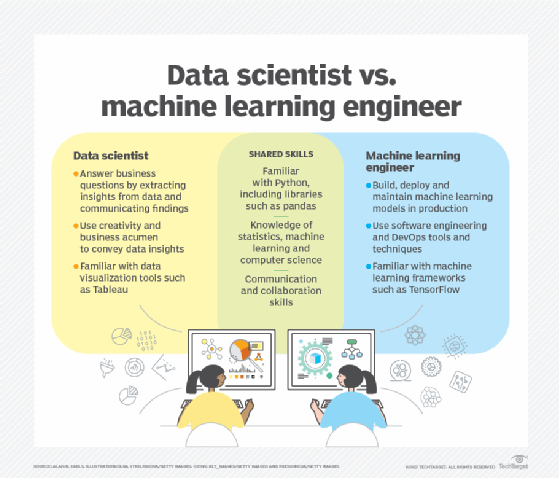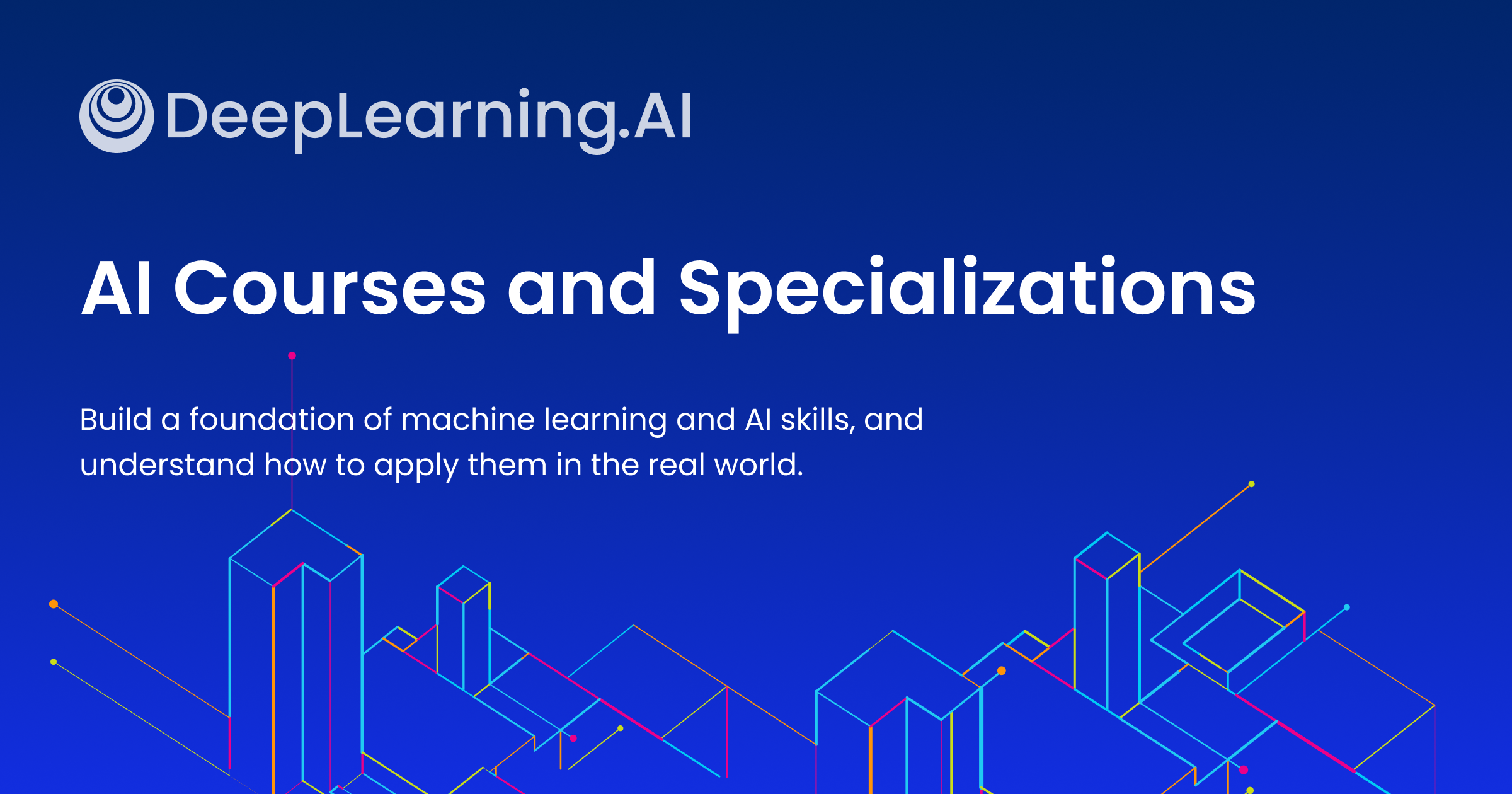All Categories
Featured
Table of Contents
- – More About 7 Best Machine Learning Courses For...
- – The Best Guide To 7-step Guide To Become A Mac...
- – How Machine Learning Engineer: A Highly Deman...
- – The 30-Second Trick For Machine Learning/ai E...
- – Rumored Buzz on Top Machine Learning Courses...
- – Indicators on Machine Learning Is Still Too ...
You possibly recognize Santiago from his Twitter. On Twitter, daily, he shares a great deal of sensible aspects of artificial intelligence. Many thanks, Santiago, for joining us today. Welcome. (2:39) Santiago: Thanks for inviting me. (3:16) Alexey: Before we go right into our primary topic of relocating from software application design to artificial intelligence, perhaps we can start with your history.
I went to college, obtained a computer scientific research degree, and I started building software. Back after that, I had no idea about machine understanding.
I know you have actually been utilizing the term "transitioning from software engineering to equipment knowing". I like the term "including in my capability the artificial intelligence skills" extra due to the fact that I believe if you're a software program engineer, you are currently supplying a whole lot of worth. By incorporating artificial intelligence currently, you're boosting the influence that you can carry the sector.
To make sure that's what I would certainly do. Alexey: This returns to one of your tweets or perhaps it was from your course when you contrast 2 methods to learning. One approach is the problem based technique, which you simply discussed. You find a problem. In this case, it was some problem from Kaggle regarding this Titanic dataset, and you simply discover exactly how to fix this trouble using a certain tool, like choice trees from SciKit Learn.
More About 7 Best Machine Learning Courses For 2025 (Read This First)
You first find out math, or direct algebra, calculus. When you understand the math, you go to maker understanding concept and you discover the concept. Four years later, you ultimately come to applications, "Okay, how do I utilize all these four years of mathematics to solve this Titanic problem?" ? In the previous, you kind of save yourself some time, I assume.
If I have an electric outlet here that I need replacing, I do not intend to most likely to college, spend 4 years recognizing the mathematics behind power and the physics and all of that, simply to change an electrical outlet. I prefer to begin with the electrical outlet and locate a YouTube video that assists me go through the issue.
Santiago: I truly like the idea of starting with a problem, trying to throw out what I know up to that issue and comprehend why it doesn't work. Grab the tools that I need to address that problem and begin excavating deeper and much deeper and deeper from that point on.
To ensure that's what I usually recommend. Alexey: Maybe we can talk a little bit about learning resources. You mentioned in Kaggle there is an intro tutorial, where you can get and find out how to choose trees. At the start, before we started this meeting, you mentioned a number of publications as well.
The only need for that course is that you understand a little bit of Python. If you're a designer, that's a terrific base. (38:48) Santiago: If you're not a developer, then I do have a pin on my Twitter account. If you most likely to my profile, the tweet that's going to be on the top, the one that states "pinned tweet".
The Best Guide To 7-step Guide To Become A Machine Learning Engineer In ...

Even if you're not a designer, you can begin with Python and function your way to even more artificial intelligence. This roadmap is concentrated on Coursera, which is a platform that I truly, truly like. You can investigate every one of the courses totally free or you can spend for the Coursera subscription to obtain certificates if you wish to.
That's what I would do. Alexey: This returns to among your tweets or perhaps it was from your training course when you compare two approaches to learning. One strategy is the problem based technique, which you simply spoke about. You find an issue. In this instance, it was some problem from Kaggle about this Titanic dataset, and you just find out how to fix this problem making use of a specific device, like decision trees from SciKit Learn.
You first learn mathematics, or straight algebra, calculus. When you understand the mathematics, you go to equipment knowing theory and you find out the concept.
If I have an electrical outlet below that I require changing, I do not wish to go to university, spend four years comprehending the math behind electrical power and the physics and all of that, simply to transform an outlet. I would certainly rather begin with the outlet and discover a YouTube video that assists me undergo the problem.
Santiago: I really like the idea of beginning with a problem, attempting to throw out what I know up to that issue and understand why it does not work. Get the tools that I need to solve that issue and start excavating deeper and much deeper and deeper from that point on.
Alexey: Perhaps we can speak a bit about discovering resources. You mentioned in Kaggle there is an intro tutorial, where you can get and discover exactly how to make choice trees.
How Machine Learning Engineer: A Highly Demanded Career ... can Save You Time, Stress, and Money.
The only demand for that course is that you understand a bit of Python. If you're a designer, that's a fantastic base. (38:48) Santiago: If you're not a designer, then I do have a pin on my Twitter account. If you most likely to my account, the tweet that's mosting likely to be on the top, the one that states "pinned tweet".
Also if you're not a developer, you can start with Python and work your method to more maker learning. This roadmap is concentrated on Coursera, which is a platform that I truly, truly like. You can examine all of the programs completely free or you can pay for the Coursera membership to obtain certifications if you intend to.
The 30-Second Trick For Machine Learning/ai Engineer
Alexey: This comes back to one of your tweets or possibly it was from your training course when you contrast two techniques to understanding. In this case, it was some issue from Kaggle about this Titanic dataset, and you simply discover how to address this trouble utilizing a certain tool, like decision trees from SciKit Learn.

You initially discover mathematics, or linear algebra, calculus. When you recognize the mathematics, you go to device learning concept and you discover the theory.
If I have an electric outlet right here that I need replacing, I don't wish to most likely to college, invest 4 years understanding the mathematics behind power and the physics and all of that, simply to alter an outlet. I would rather begin with the outlet and locate a YouTube video that assists me undergo the problem.
Santiago: I really like the concept of beginning with a problem, trying to toss out what I understand up to that trouble and understand why it does not work. Grab the tools that I need to address that problem and start digging deeper and deeper and deeper from that factor on.
To ensure that's what I usually advise. Alexey: Possibly we can talk a little bit regarding discovering resources. You pointed out in Kaggle there is an introduction tutorial, where you can obtain and discover how to choose trees. At the beginning, before we started this interview, you discussed a number of books also.
Rumored Buzz on Top Machine Learning Courses Online
The only need for that program is that you understand a little bit of Python. If you go to my account, the tweet that's going to be on the top, the one that states "pinned tweet".
Also if you're not a developer, you can start with Python and work your means to more maker discovering. This roadmap is concentrated on Coursera, which is a platform that I truly, truly like. You can examine every one of the training courses completely free or you can spend for the Coursera membership to get certifications if you desire to.
That's what I would certainly do. Alexey: This returns to among your tweets or possibly it was from your course when you contrast 2 strategies to knowing. One strategy is the issue based approach, which you simply discussed. You locate an issue. In this case, it was some issue from Kaggle regarding this Titanic dataset, and you just find out exactly how to solve this problem using a certain device, like choice trees from SciKit Learn.
You first discover math, or straight algebra, calculus. When you understand the math, you go to machine discovering concept and you learn the theory.
Indicators on Machine Learning Is Still Too Hard For Software Engineers You Need To Know
If I have an electric outlet below that I require replacing, I don't desire to most likely to college, invest 4 years comprehending the mathematics behind electricity and the physics and all of that, simply to transform an electrical outlet. I prefer to begin with the outlet and find a YouTube video that helps me go with the trouble.
Poor analogy. But you get the concept, right? (27:22) Santiago: I really like the idea of beginning with an issue, attempting to toss out what I know approximately that trouble and recognize why it does not function. Then get the tools that I require to address that issue and begin digging much deeper and much deeper and deeper from that point on.

To ensure that's what I typically suggest. Alexey: Possibly we can speak a bit concerning finding out sources. You discussed in Kaggle there is an introduction tutorial, where you can get and find out just how to make decision trees. At the start, prior to we began this meeting, you stated a pair of publications.
The only need for that training course is that you understand a little bit of Python. If you go to my profile, the tweet that's going to be on the top, the one that claims "pinned tweet".
Even if you're not a designer, you can begin with Python and function your method to more artificial intelligence. This roadmap is concentrated on Coursera, which is a system that I really, actually like. You can examine every one of the courses for totally free or you can spend for the Coursera membership to get certificates if you intend to.
Table of Contents
- – More About 7 Best Machine Learning Courses For...
- – The Best Guide To 7-step Guide To Become A Mac...
- – How Machine Learning Engineer: A Highly Deman...
- – The 30-Second Trick For Machine Learning/ai E...
- – Rumored Buzz on Top Machine Learning Courses...
- – Indicators on Machine Learning Is Still Too ...
Latest Posts
Senior Software Engineer Interview Study Plan – A Complete Guide
Tips For Acing A Technical Software Engineering Interview
How To Master Whiteboard Coding Interviews
More
Latest Posts
Senior Software Engineer Interview Study Plan – A Complete Guide
Tips For Acing A Technical Software Engineering Interview
How To Master Whiteboard Coding Interviews